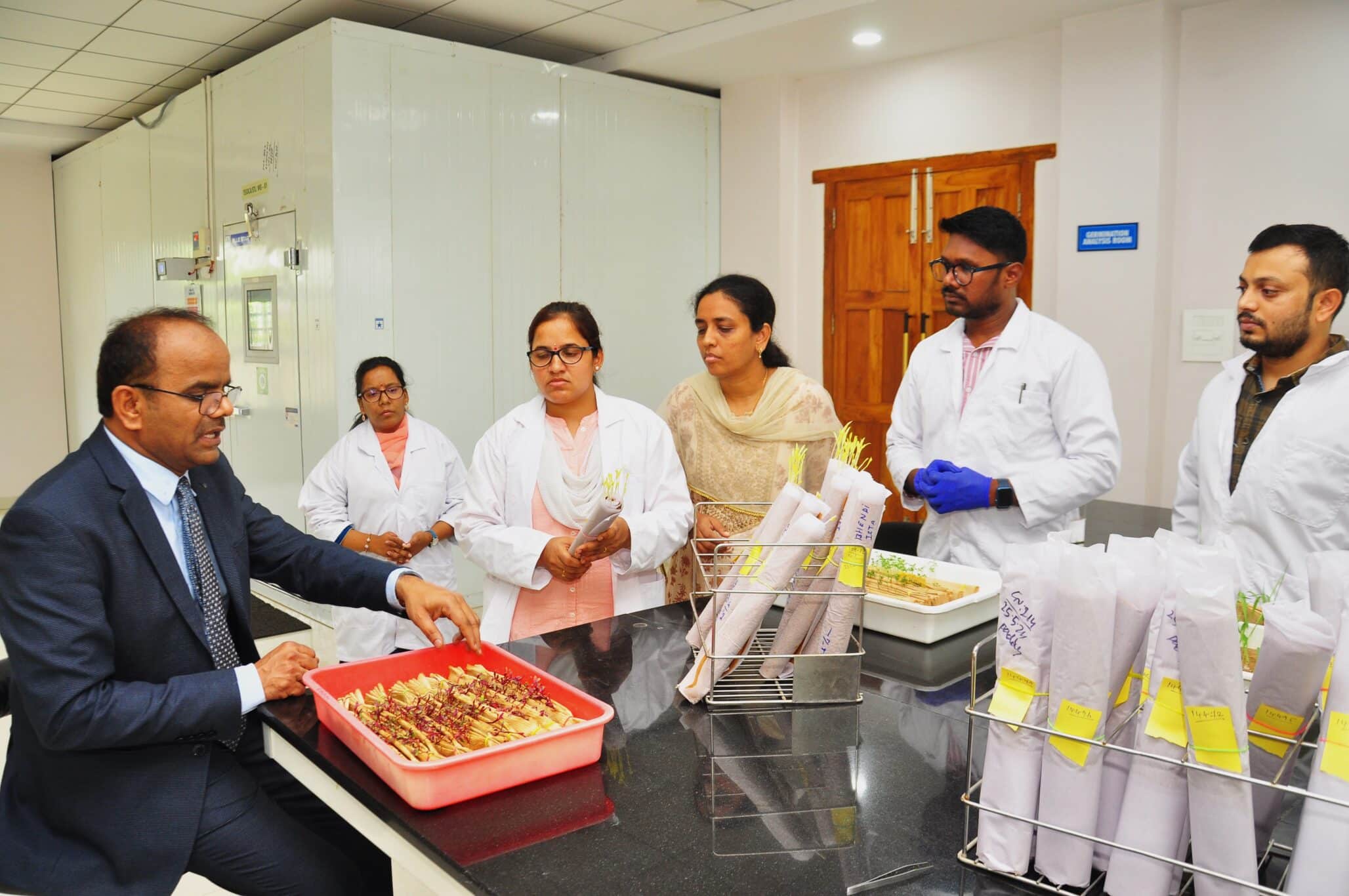The emerging science of gene drives has the potential to address environmental and public health challenges, but gene-drive modified organisms are not ready to be released into the environment and require more research in laboratories and highly controlled field trials, says a new report from the National Academies of Sciences, Engineering, and Medicine.
To navigate the uncertainty posed by this fast-moving field of study and make informed decisions about the development and potential application of gene-drive modified organisms, the committee that conducted the study and wrote the report recommended a collaborative, multidisciplinary, and cautionary approach to research on and governance of gene drive technologies.
Gene drives are systems of biased inheritance that enhance a genetic element’s ability to pass from parent organism to offspring. With the advent of new, more efficient, and targeted gene-editing techniques such as CRISPR/Cas9, gene modifications can, in principle, be spread throughout a population of living organisms intentionally and quickly via a gene drive, circumventing traditional rules of inheritance and greatly increasing the odds that an altered gene spreads throughout a population. Preliminary evidence suggests that gene drives developed in the laboratory could spread a targeted gene through nearly 100 percent of a population of yeast, fruit flies, or mosquitoes.
Gene drives have the potential to address public health threats, conservation-related issues, agricultural pests, and other challenges. For example, gene drives might be developed to modify organisms that carry infectious diseases such as dengue, malaria, and Zika. In agriculture, a gene drive might be used to control or alter organisms that damage crops or carry crop disease. On the other hand, some gene-drive modified organisms might lead to unintended consequences, such as the unintentional disruption of a non-target species or the establishment of a second, more resilient invasive species.
“The science and technology associated with gene drives is developing very quickly,” said committee co-chair James P. Collins, Virginia M. Ullman Professor of Natural History and the Environment in the School of Life Sciences, Arizona State University. “But before gene-drive modified organisms are put into the environment, our committee urges caution — a lot more research is needed to understand the scientific, ethical, regulatory, and social consequences of releasing such organisms.”
The remaining gaps in our understanding of the biology of gene drives and the potential effects of gene-drive modified organisms on the environment are fundamental considerations in the development and release of gene-drive modified organisms, the report says. Laboratory and field research is needed to refine gene drive mechanisms and better understand how gene drives work, from the molecular level through species and ecosystem levels. Meeting this need will require collaboration among multiple fields of study including molecular biology, population genetics, evolutionary biology, and ecology. In addition, open-access, online data banks and standard operating procedures should be established to share information and guide research design.
“Responsible research on gene drives and gene drive technology requires consideration of values and public engagement throughout the process,” said committee co-chair Elizabeth Heitman, associate professor of medical ethics, Vanderbilt University Medical Center’s Center for Biomedical Ethics and Society. “From conducting basic research, to choosing a problem to address and an organism to modify, to devising strategies to pursue field testing safely, it is essential to examine each gene drive on a case-by-case basis and to engage stakeholders and the public in assessing their potential development.”
The committee recommended a phased testing approach to gene drive research to guide research from the laboratory to the field. Because the goal of using a gene drive is to spread genetic information throughout a population rapidly, it is difficult to anticipate its impact and important to minimize the potential for unintended consequences. Phased testing can facilitate evidence-based decision making, with every step promoting careful study and evaluation.
Each proposed field test or environmental release of a gene-drive modified organism should be subject to robust ecological risk assessment before being approved, the report says. These assessments, which take into account the gene drive’s characteristics, effects on humans and the environment, and local values and governance, are a key tool for determining a gene drive’s impacts. As of May 2016, no ecological risk assessment has been conducted for a gene-drive modified organism.
Public engagement can help frame and define the potential harms and potential benefits of using a gene-drive modified organism, and must be built into risk assessment and practical decision making. The outcomes of public engagement may be as crucial as scientific outcomes in making decisions about whether or not to release a gene-drive modified organism into the environment. The report recommends that the governing authorities, including research institutions, funders, and regulators, develop and maintain clear policies and mechanisms for how public engagement will factor into research, ecological risk assessments, and public policy decisions about gene drives.
The report finds that the current regulatory practices for assessing risks or potential environmental effects of field experiments or planned releases are inadequate for gene drives. At present, the regulation of gene drive research does not fit within the purview of any of the U.S. agencies involved in the Coordinated Framework for the Regulation of Biotechnology, which includes the Food and Drug Administration, U.S. Department of Agriculture, and the U.S. Environmental Protection Agency. Gene drive research also raises regulatory concerns about biosafety, biosecurity, and the potential for this technology intended for human benefit to be intentionally misused for harmful purposes.
The report calls for flexible and rapidly adaptable governance policies, such as the World Health Organization’s Guidance Framework for Testing of Genetically Modified Mosquitoes, to facilitate international coordination and collaboration. In selecting sites for potential field testing and environmental releases, the committee recommended that preference be given to locations in countries with existing scientific capacity and governance frameworks to conduct and oversee the safe investigation of gene drives and the development of gene-drive modified organisms. The scientific community – including researchers, institutions, and those who fund the research – must engage with policymakers on best practices to prevent misuse of gene-drive modified organisms.













